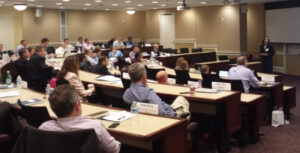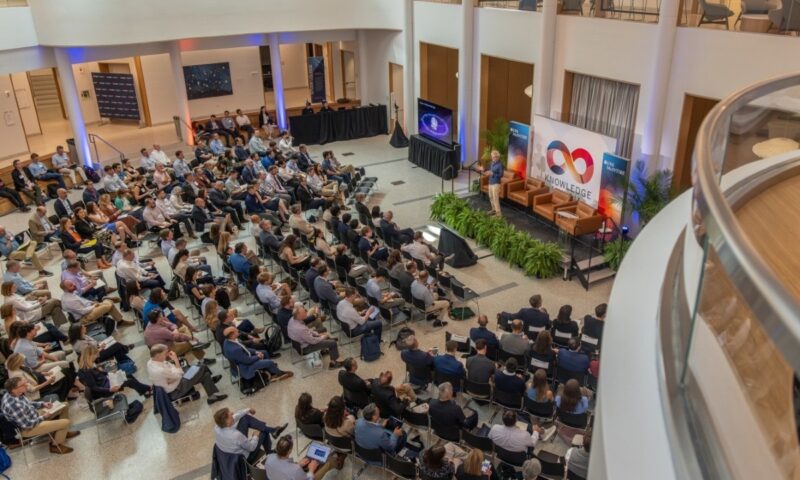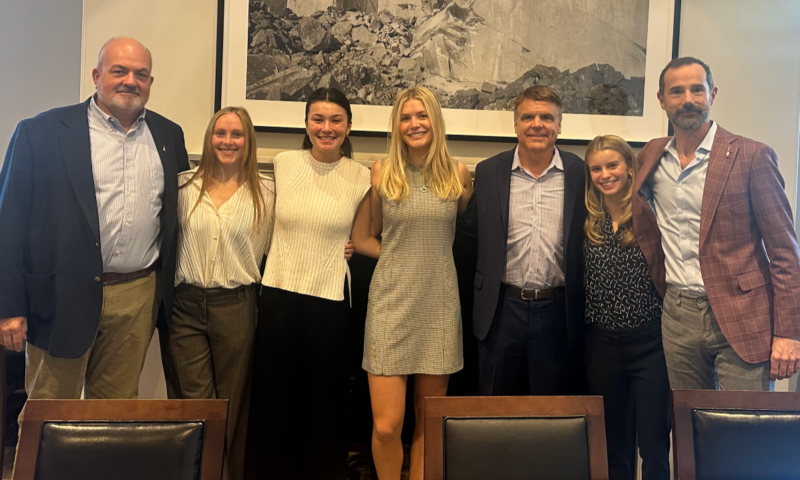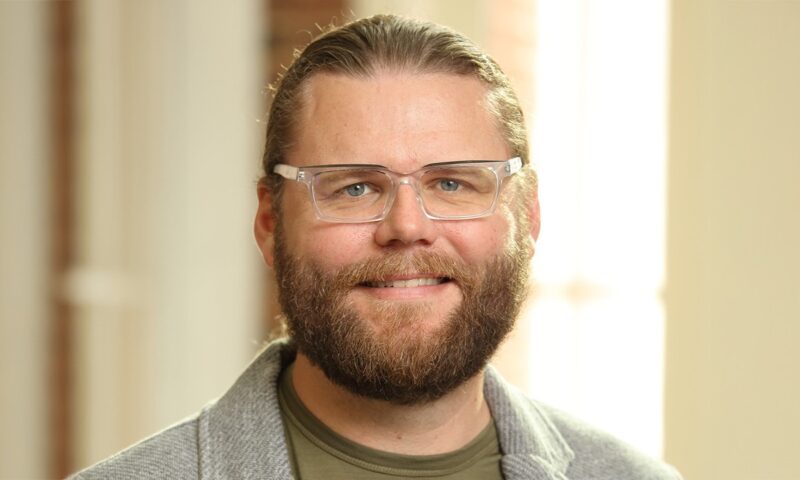 Just how smart are today’s artificial intelligence-enabled technologies, and what sorts of business opportunities—and challenges—are likely to arise as such technologies become increasingly prevalent? What are the best tools and techniques for creating effective visual renderings of the patterns and insights that lie hidden within massive data sets? Critically, what are the origins of the most crippling cybersecurity threats, and what can organizations do to protect themselves from such threats?
Just how smart are today’s artificial intelligence-enabled technologies, and what sorts of business opportunities—and challenges—are likely to arise as such technologies become increasingly prevalent? What are the best tools and techniques for creating effective visual renderings of the patterns and insights that lie hidden within massive data sets? Critically, what are the origins of the most crippling cybersecurity threats, and what can organizations do to protect themselves from such threats?
It was these questions, among a host of fascinating related others, that were discussed with expert clarity and up-to-the-minute insight during the 2016 Knowledge Continuum, held May 13, 2016, in McIntire’s Rouss & Robertson Halls. This year’s event was attended by some 50 IT and business professionals, with discussions led by Adam Burden (Engineering ’92), Group Technology Officer and Global Lead for Emerging Technology Innovation for Accenture; Jennifer Claggett, Assistant Professor at the McIntire School of Commerce; Stefano Grazioli, Associate Professor at the McIntire School of Commerce and Director of the M.S. in MIT Program; Jingjing Li, Assistant Professor at the McIntire School of Commerce; and Chris Porter (A&S ’98, M.S. in MIT ’10), CISO for Fannie Mae.
“In planning the Knowledge Continuum, we really try to focus on the technologies and technology-driven solutions, trends, and issues that are emerging as critical for today’s business leaders,” says McIntire IT Professor Ryan Nelson, the event’s organizer. “Our aim is to provide participants not only with an enhanced knowledge and awareness of the latest innovations in IT, but also to help them understand the implications of those innovations for their business or organization.”
Offered in partnership with McIntire’s highly regarded M.S. in the Management of Information Technology Program, the one-day Knowledge Continuum is designed to provide business leaders with an expertly guided learning experience focusing on the cutting-edge IT trends that are dramatically altering today’s business landscape. Featuring a dynamic complement of case studies, research reports, exercises, interactive classroom discussions, and networking opportunities, the Continuum offers participants a comprehensive, high-value learning experience.
Know-It-Alls
McIntire Professors Grazioli and Li kicked off the Continuum with a discussion of the astounding strides in—as well as the intriguing possibilities for and current limitations of—the new learning-capable machines touted as having “artificial intelligence,” or AI.
“There’s been so much hype around artificial intelligence for so long,” Grazioli said, showing the class a 30-year-old Harvard Business Review article that regarded as imminent the replacement of doctors, lawyers, and teachers with “smart” robots. “What we really want to understand is what AI is, and how we can meaningfully and profitably incorporate it into business.” Grazioli then engaged in a lively case study of the mind-bogglingly advanced technology involved in the creation of IBM’s super-duper-smart “Watson” computer, which in 2011 trounced the two best-ever players of the trivia game show “Jeopardy!”
“Watson represents an absolutely astonishing advancement in AI,” Grazioli told the class, noting the unprecedented sophistication of Watson’s intelligence.
Indeed, Li told the audience, today’s smart technologies represent ever-more-accurate facsimiles of the neuronal structures and synapse-enabled workings of the human brain, with the result that the new technologies are able to “learn” from their experiences and mistakes. Such technologies, she said, are already widely—and very effectively—used by all major search engines; in health care analytics and financial market forecasting; and in voice recognition and translation software. They’re also the critical components in the not-yet-roadworthy self-driving car.
Still, Li said, showing the results of a text-analysis application designed to make product recommendations based on people’s Tweets, smart technologies aren’t always on the mark: Having analyzed a series of President Obama’s Tweets, the application suggested a range of high-priced designer handbags in which the President would likely be interested. “AI is making some huge advances,” Li said, “but it’s certainly not perfect.”
Grazioli and Li’s presentation was followed by a Q&A session in which audience members asked about the best current uses for AI; the best ways to use AI for sustainable business advantage; and the interesting complexities of culturally determined communication styles, with which AI is currently unable to cope.
Perfect Combination
Doug Keating (A&S ’90, M.S. in MIS ’01), Principal at Booz Allen Hamilton, says the Knowledge Continuum’s combination of expert presentations complemented by questions and comments from a business- and tech-savvy audience offers a uniquely enriching learning experience. “It’s incredibly useful to go through real-world case studies and talk about instances in which a technology really added value, as well as situations in which it might not quite have achieved the desired aims,” Keating says, noting that he is currently working with clients who are actively seeking to make the best use of AI. “Dollar for dollar,” says Keating, “the Knowledge Continuum is one of the best values in IT education.”
More to the Story
Indeed, Continuum participants were treated to four additional and equally high-value presentations and discussions. McIntire’s Claggett offered Continuum attendees an update on the latest in data visualization, discussing some of the key trends—animation, interaction, contextualization, and democratization—driving and enlivening data visualization efforts today, as well as the most appropriate technologies for users’ varying visualization needs. Li was joined by McIntire undergraduate student Arthur Wu (McIntire ’16), whose impressively compelling data analysis and visualization blog, “Phenomenon,” has earned widespread accolades.
Participants then had a chance to learn from Accenture’s Burden about the very latest in software development practices, and the fascinating ways in which such practices are evolving to meet the needs of today’s organizations. Burden discussed the critically important streamlining effects of “DevOps” practices (according to which the work of software developers and other IT professionals is integrated, with the aim of increasing the speed, frequency, and quality of software delivery and infrastructure changes), as well as the remarkable utility of such cutting-edge computing architectures as modular, task-oriented “microservices.”
The Continuum drew to a close with Fannie Mae’s Porter offering an in-depth look at some of the most serious cybersecurity risks facing organizations today, including the high-tech data-theft technology “ransomware,” as well as cyberattacks originating with differently motivated groups affiliated with China, Russia, North Korea, and Iran. Porter’s comments were underscored by the Continuum’s final presentation, in which current Lou Bryan (M.S. in MIT ’16), Dan O’Brien (M.S. in MIT ’16), and Peter Parmentier (M.S. in MIT ’16) offered a comprehensive, in-depth retrospective on the massive cyberattack UVA suffered in 2015, as well the painstaking remediation project that ensued.
“The bad guys only have to be right once—but we have to be right all the time,” Porter said, describing the tremendous challenge of working in information security. Still, he said, outlining the possibilities for more secure, cloud-based security options, “leading-edge technologies will close the gap.”
For two-time Continuum participant Rick Miller (M.S. in MIT ’12), Managing Director at The Advisory Board Company, closing the gap with leading-edge technologies is what it’s all about. “Each day, we’re all asked to do more with less, and to do things in smarter, more efficient ways,” Miller says. “Everything we focus on here at the Knowledge Continuum has to do with innovation, automation, and getting the right tools into the right hands so that IT serves to enable and empower the user.”
By Mary Summers Whittle


